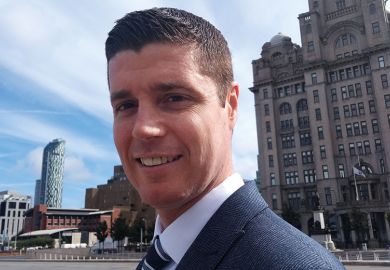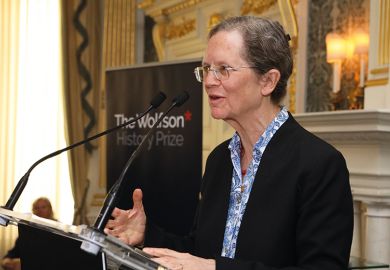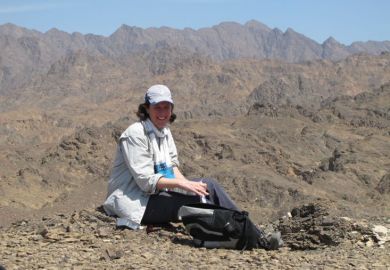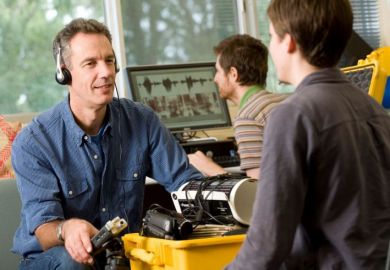Mauro Ferrari, an Italian researcher whose career has spanned mathematics, engineering and medicine, will take up the presidency of the European Research Council at the beginning of 2020. A nanomedicine pioneer, he has spent the majority of his career in the US, with positions at institutions including the University of California, Berkeley, the National Cancer Institute, the University of Texas Medical School, and the Houston Methodist Research Institute.
When and where were you born?
Padua, Italy, in 1959.
How has this shaped you?
My father was a military man, and my mother was a homemaker who had taught at a little elementary school right after the Second World War. I grew up in Udine, in a very modest neighbourhood, which I loved very much; and I still do. I was the first person in my family to attend university. That involved some pressure, especially initially, but it also taught me to work hard and, later in life, to fight my battles with the tools I had at my disposal. My upbringing also planted in me the belief that, whenever we can, we have the responsibility to help others and strive to make the world a better place to the best of our capacity.
You originally trained as an engineer, but then moved into medicine, starting medical school at the age of 43. What attracted you to engineering – and then why did you move into medicine?
I have a rather multidisciplinary scientific path, for a number of reasons. Coming from a simple background, I chased every opportunity. I actually started with astronomy – a subject that fascinated me – but my life as a basketball professional did not allow me to attend laboratories with regularity, so I switched to mathematics. I was not very good, but got a chance to write my senior thesis with a fellowship at the University of California, Berkeley. There, I was offered support to do a PhD doing mathematical work in mechanical engineering, so I switched. I then accepted a split faculty position at Berkeley in civil engineering and materials science. When my wife of 10 years got cancer and died at 32, I started focusing on using the technology tools I had to fight this disease. This led me to go to medical school, become the chief architect of the National Cancer Institute’s programme in cancer nanotechnology, and spend the rest of my life as an academic medical researcher, biotech entrepreneur, and hospital executive.
You’ve spent your career in the US, but are now moving back to Europe. Why do you want to return, and what will you miss about the US?
I have never lost touch with Europe, and my home country, and have been involved in many research collaborations in Europe over the years. Now I feel it’s the right moment for me to move back to the continent I hail from. I will retain academic collaborations with the US. I am a great believer in the European project and am really looking forward to contributing to this at a critical moment. I cannot think of a better way of doing so than to have the opportunity to lead an organisation like the European Research Council, which has already proved to be a European success. I want to serve European research and citizens. I will be thrilled to do this because Europe is second to none when it comes to research and we must make sure it stays that way.
As a member of the Pontifical Academy for Life, you advise the Pope on the latest medical research and the ethical challenges it creates. What has surprised or interested you about the response of the Pope and the Vatican to new research?
I am very happy that Pope Francis has chosen such an inclusive and open-minded approach. The Pontifical Academy for Life is an interesting forum, as it comprises more than 100 people from all over the world, of several different faiths as well as atheists and agnostics. Nobel laureate Shinya Yamanaka [the Japanese stem cell researcher] is a member, for instance. This very diverse group of people from different scientific backgrounds gets together to share opinions on some of the aspects of contemporary frontier science, such as the ethics of robotics, artificial intelligence, our relationship with the environment, certain aspects of neurosciences, and more.
Has your Catholic faith informed your research – and vice versa?
The scientific method is the same, no matter what faith one might belong to in the private sphere. Faith is not a science, and vice versa. They belong in different domains.
In your fifties, you started running marathons, including ultramarathons up mountains. Why did you start, and how do you feel at the peak of exertion?
Running helps me with clarity of mind, focus, discipline, and persistence. Marathons are good metaphors for cancer research, for sure. They can also teach you many lessons, for instance when I finish last (which has happened) – sometimes beaten by less experienced runners or older runners or others one would not expect – it’s humbling!
You’re also a jazz saxophonist. What does that bring to your life?
Jazz and blues are all about creativity, expression, communication, sharing with others, working as a team with the band, collective creativity as a swarming behaviour. Just like science!
What keeps you up at night?
Who has time to worry? I have things to do! I never slept much, and working those extra hours helps me keep up with the many people who are so much more talented than myself.
What one change would improve your working day the most?
Make it longer.
david.matthews@timeshighereducation.com
Appointments
Susan Gibbons has been appointed Yale University’s vice-provost for collections and scholarly communications. She was previously the Stephen F. Gates ’68 university librarian and deputy provost for collections and scholarly communications. Prior to Yale, Dr Gibbons held librarian positions at Indiana University, the University of Massachusetts Amherst, and the University of Rochester. Peter Salovey, Yale’s president, said that Dr Gibbons’ expanded role would allow her to “lead campus-wide, national, and global conversations about integrating cultural heritage resources in teaching and research”.
Paul Mapfumo is the new vice-chancellor of the University of Zimbabwe. Professor Mapfumo, a professor of agricultural engineering, had been acting vice-chancellor at the university since August last year, and has been appointed on a five-year term. Anxious Jongwe Masuka, chairman of the university council, described Professor Mapfumo as a “distinguished academic, administrator and researcher par excellence”, whose work has been “central to keeping the University of Zimbabwe radical and relevant, and to positioning the institution positively for the future”.
Roger Eccleston has been promoted to deputy vice-chancellor (academic) at Sheffield Hallam University. He was previously pro vice-chancellor for research and global engagement, and dean of the Faculty of Arts, Computing, Engineering and Science, and starts his new role next month.
Angela McLean has been named the Ministry of Defence’s first female chief scientific adviser. She is currently professor of mathematical biology at the University of Oxford.
Debasish Dutta has been selected as the new chancellor of the University of Michigan-Flint. Professor Dutta, the former chancellor at Rutgers University-New Brunswick, will take up his new position in August.
Judith Buchanan has been elected the next master of St Peter’s College, Oxford. Professor Buchanan, currently dean of the faculty of arts and humanities at the University of York, will take over from Mark Damazer in October.
Rafael Martín is the new vice-president and chief of staff at the University of Texas at Dallas. He was previously associate vice-president for research.
Register to continue
Why register?
- Registration is free and only takes a moment
- Once registered, you can read 3 articles a month
- Sign up for our newsletter
Subscribe
Or subscribe for unlimited access to:
- Unlimited access to news, views, insights & reviews
- Digital editions
- Digital access to THE’s university and college rankings analysis
Already registered or a current subscriber?




